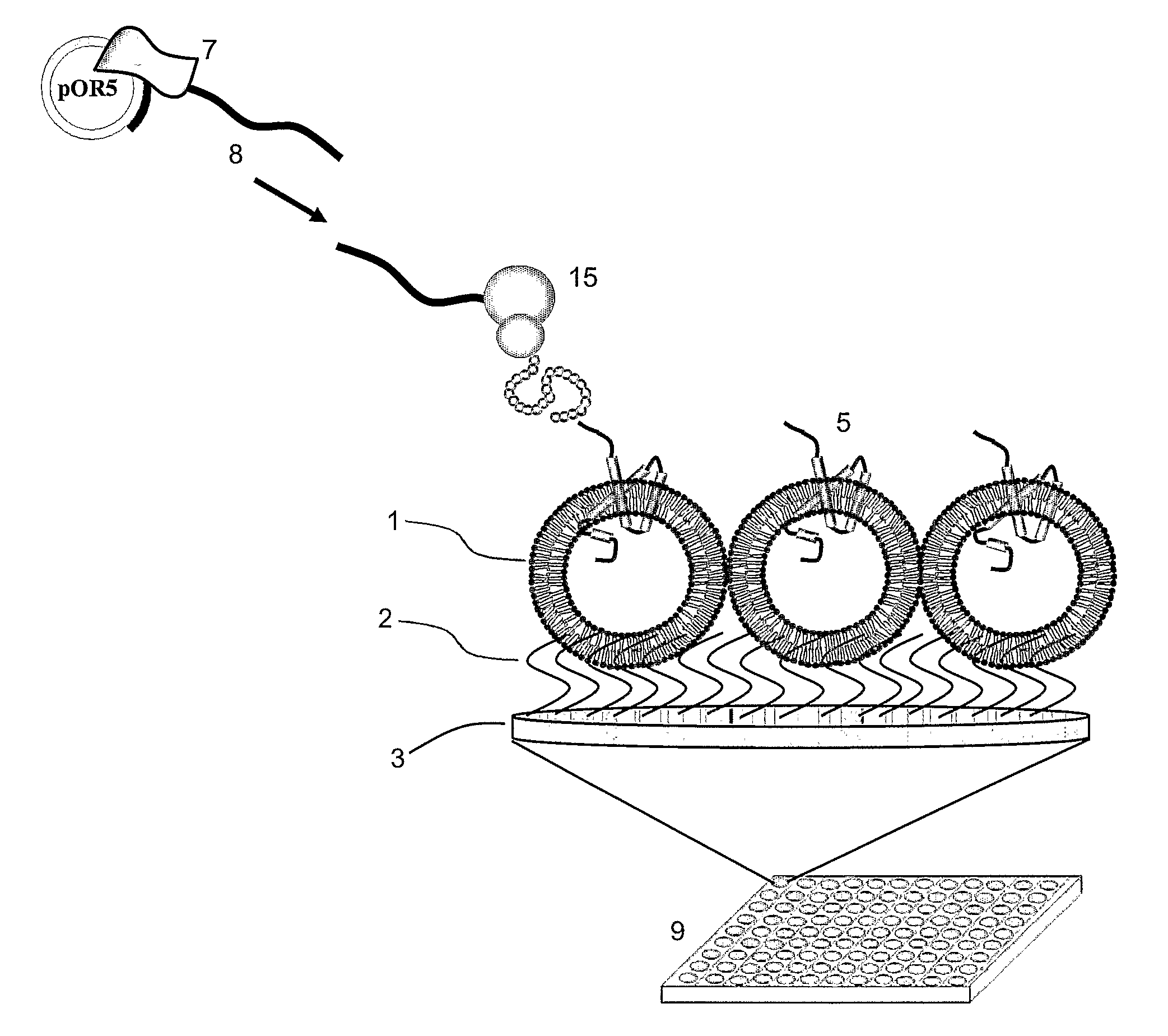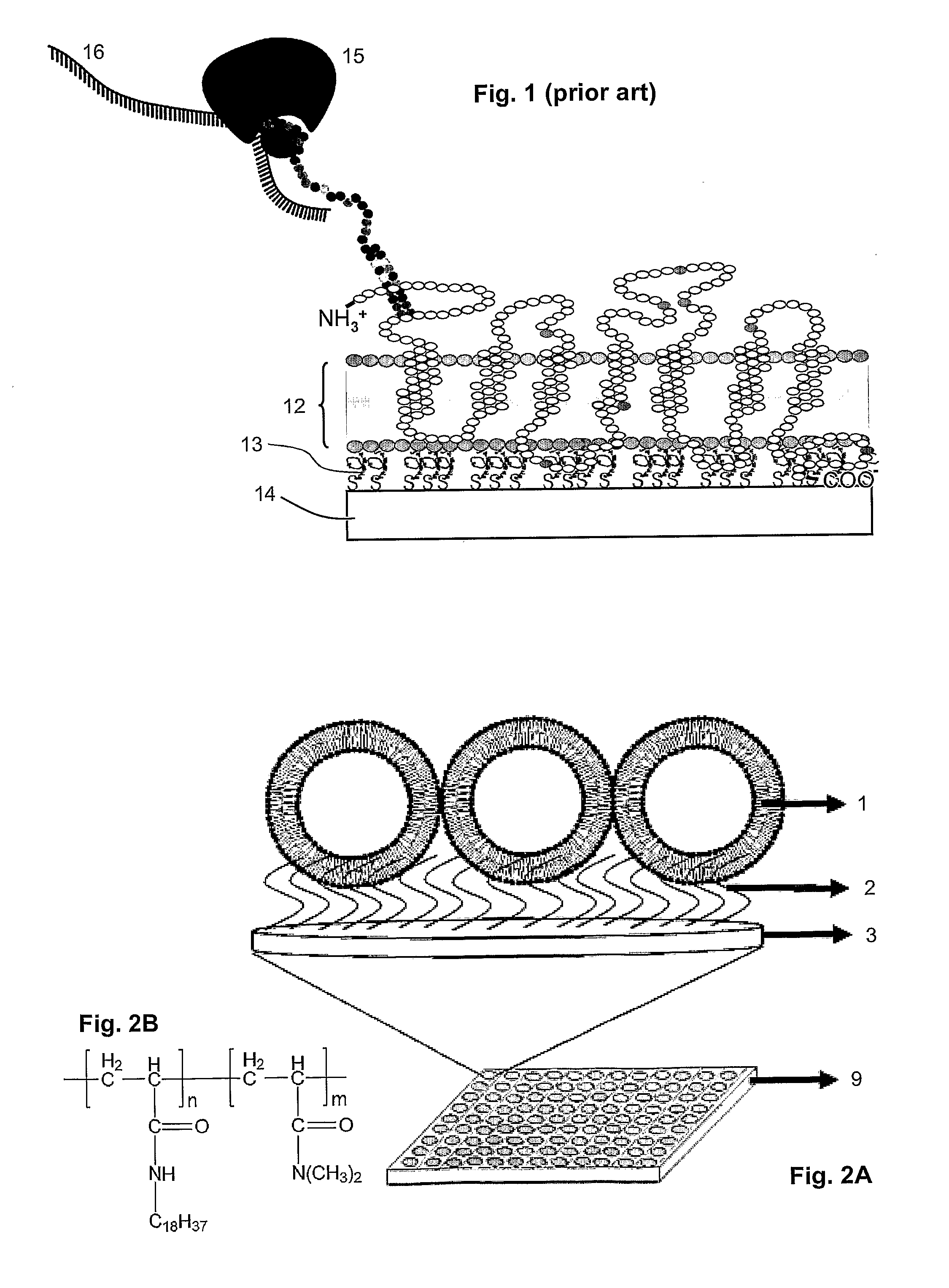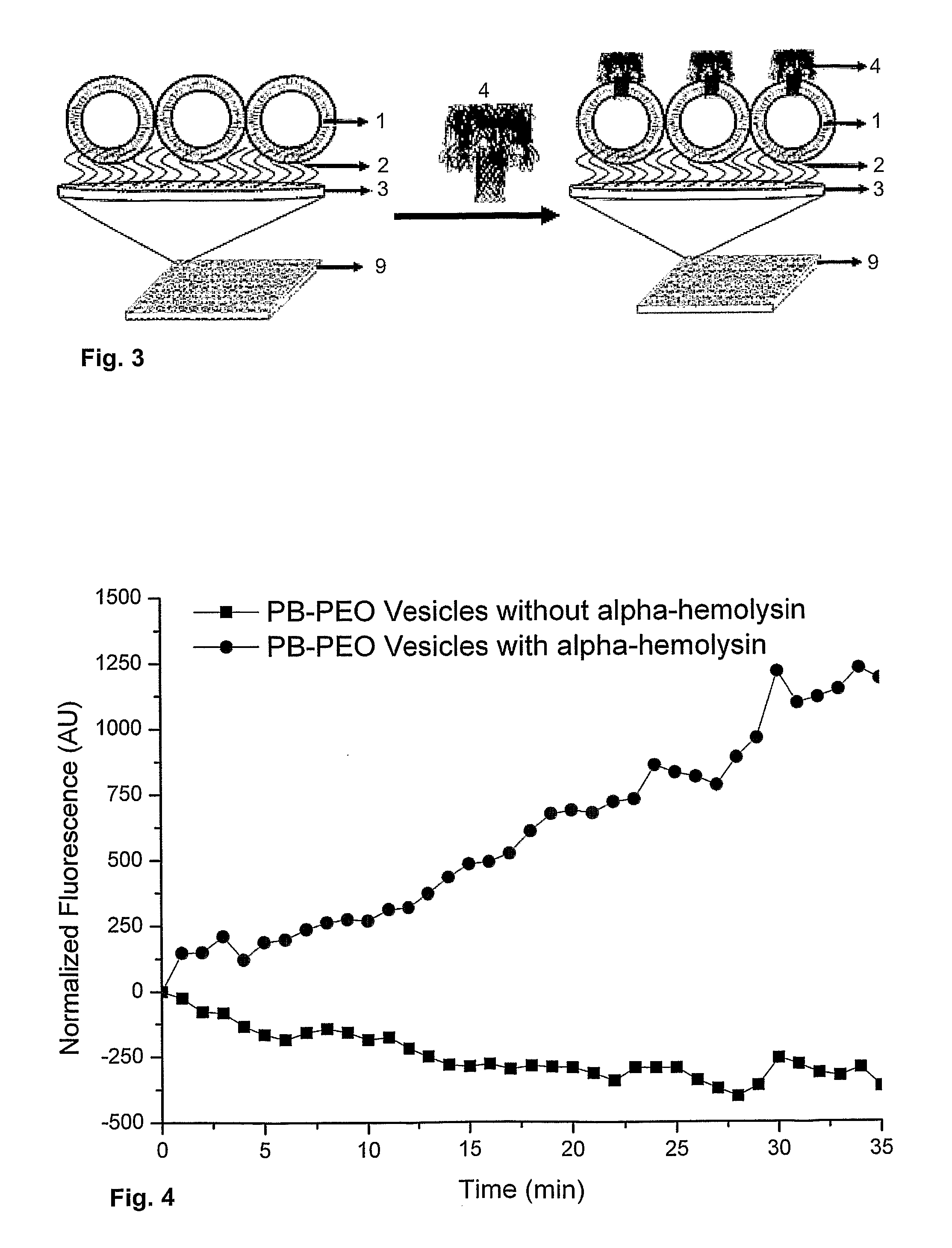Vesicular system and uses thereof
a technology of vesicle and membrane, applied in the field of vesicle system, can solve the problems of difficult to maintain the robustness of a conventional membrane layer on the surface, the approach does not allow the incorporation of complex membrane proteins, and the task is extremely difficul
- Summary
- Abstract
- Description
- Claims
- Application Information
AI Technical Summary
Benefits of technology
Problems solved by technology
Method used
Image
Examples
example 1
Preparation of Polymer Vesicles
[0083]Polybutadiene-Polyethyleneoxide (PB21-PEO12) diblock copolymer was kindly provided by Prof. Jan van Hest, Radboud University Nijmegen, Netherlands.
[0084]10 mg of PB21-PEO12 di-block copolymer is dissolved in 300 μl of THF and added into 700 μl of MilliQ H2O. The solution is dialyzed using 50,000 MW ready to use membrane (Spectrum Labs) against MilliQ H2O for 24 hours.
example 2
Preparation of Anchored Polymer Vesicles on a Multiwell Plate
[0085]Octadecylacrylamide and N,N-dimethyl acrylamide with a molar ratio of 99:1 (polymer A) were synthesized according to the procedures of Hara et al. (Supramolecular Science (1998) 5, 777-781). A Microtiter® plate from BD Biosciences was used.
[0086]Acrylamide solution (3.5 ml of 50 mM Tri-Cl (pH 7.2), 0.5 ml of 40% acrylamide, 5 μl of N,N,N′,N′Tetramethylethylenediamine (TEMED), 35 μl of ammonium persulphate (APS) with and without polymer A is prepared. 100 μl of above solution is added to each well of the Microtiter® plate. 75 μl of polymer vesicles prepared in Example 1 are added into these wells before the acrylamide polymerizes. The Microtiter® plate is shaken gently at room temperature for two hours for even spreading of polymer vesicles on to the Polyacrylamide gel. Microtiter® plate wells were rinsed with MilliQ several times to remove the non-anchored polymer vesicles.
example 3
[0087]In order to investigate the insertion of membrane proteins into the polymer vesicles embedded on the Microtiter® plate wells, calcein was encapsulated inside the polymer vesicles at self-quenching concentrations. The schematic of this protocol is illustrated in FIG. 3. This calcein based assay provides a quick assay to test the integrity of the spherical structures. A standard calcein based assay can be used to test the integrity of the polymersomes.
[0088]30 mM of calcein was encapsulated inside the polymersomes. The solution is dialyzed using 50,000 MW ready to use membrane (Spectrum Labs) against MilliQ H2O for 24 h to remove the non-encapsulated calcein and to attach the polymersomes to the poly-acrylamide matrix. These polymer vesicles encapsulated with calcein were added to the microtiter plate and shaken gently at room temperature to anchor to the polyacrylamide matrix. After incubation, the microtiter plate was rinsed with MilliQ to remove the non a...
PUM
| Property | Measurement | Unit |
|---|---|---|
| Temperature | aaaaa | aaaaa |
| Amphiphilic | aaaaa | aaaaa |
| Glass transition temperature | aaaaa | aaaaa |
Abstract
Description
Claims
Application Information
 Login to View More
Login to View More - R&D
- Intellectual Property
- Life Sciences
- Materials
- Tech Scout
- Unparalleled Data Quality
- Higher Quality Content
- 60% Fewer Hallucinations
Browse by: Latest US Patents, China's latest patents, Technical Efficacy Thesaurus, Application Domain, Technology Topic, Popular Technical Reports.
© 2025 PatSnap. All rights reserved.Legal|Privacy policy|Modern Slavery Act Transparency Statement|Sitemap|About US| Contact US: help@patsnap.com



